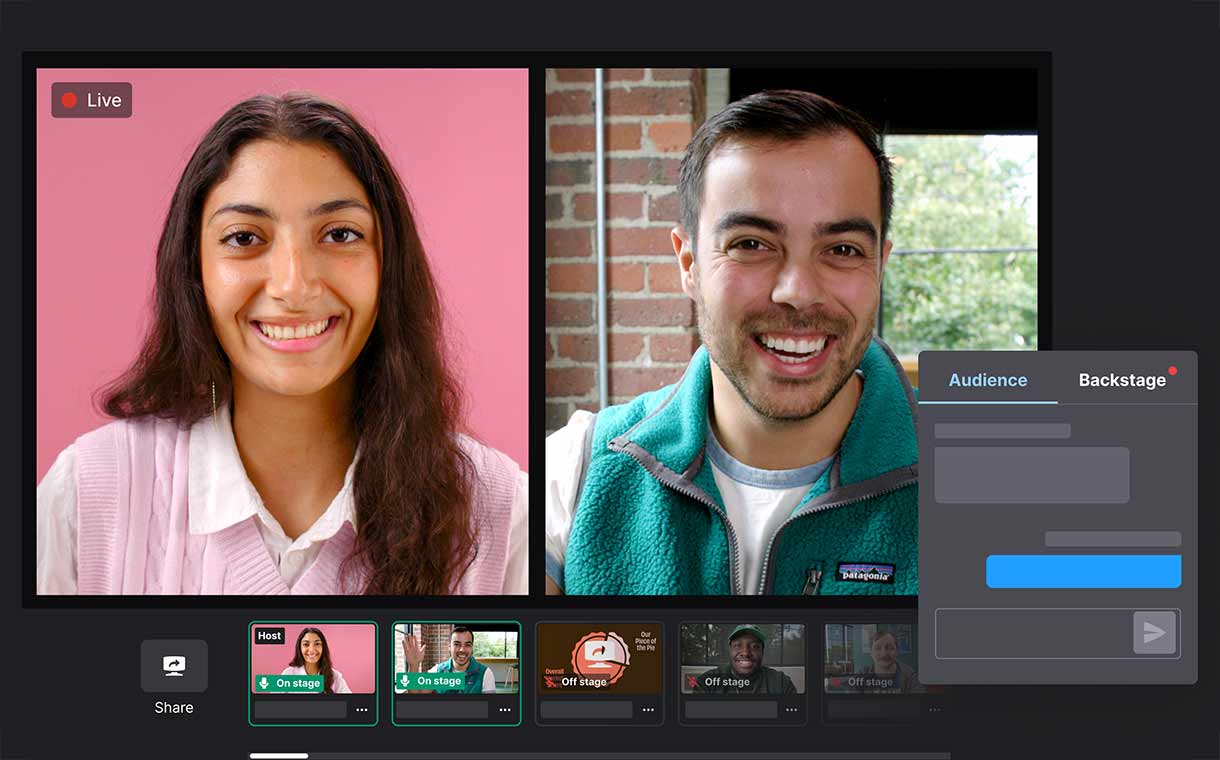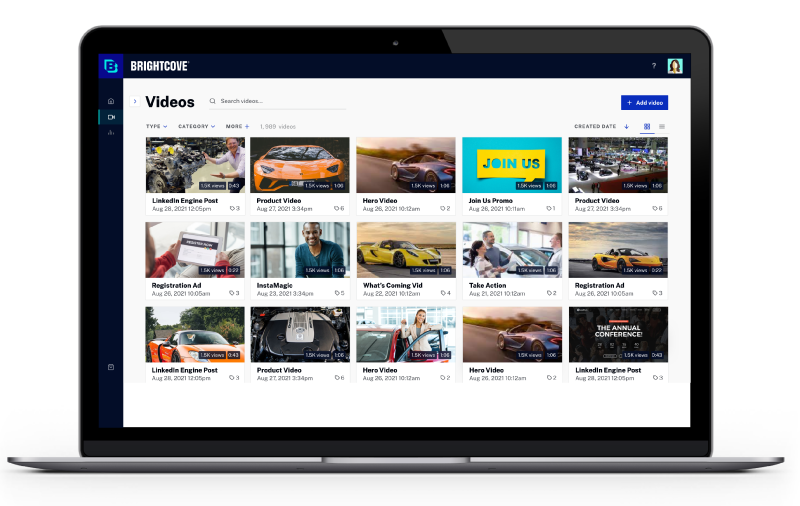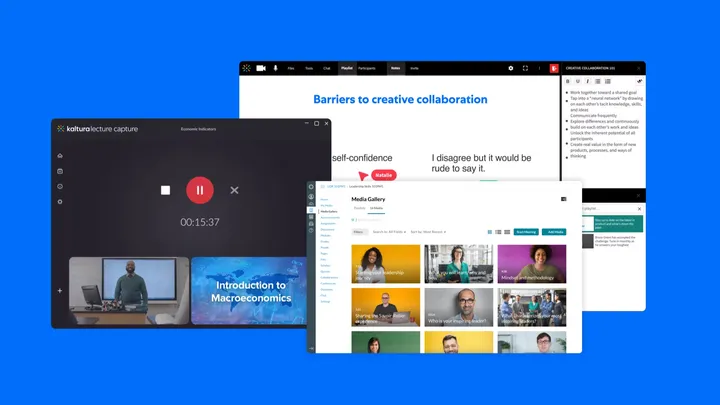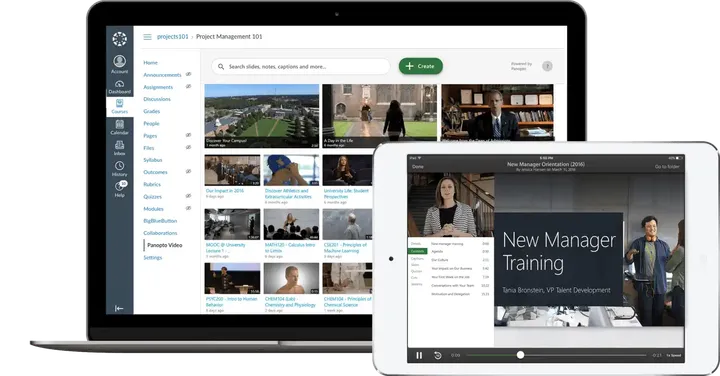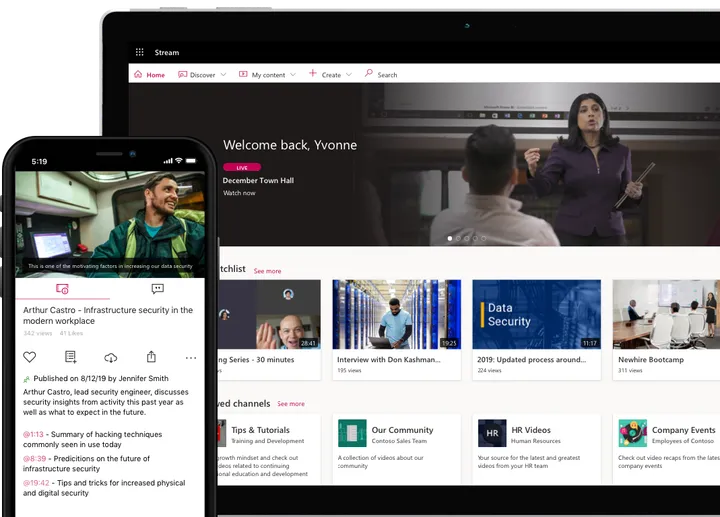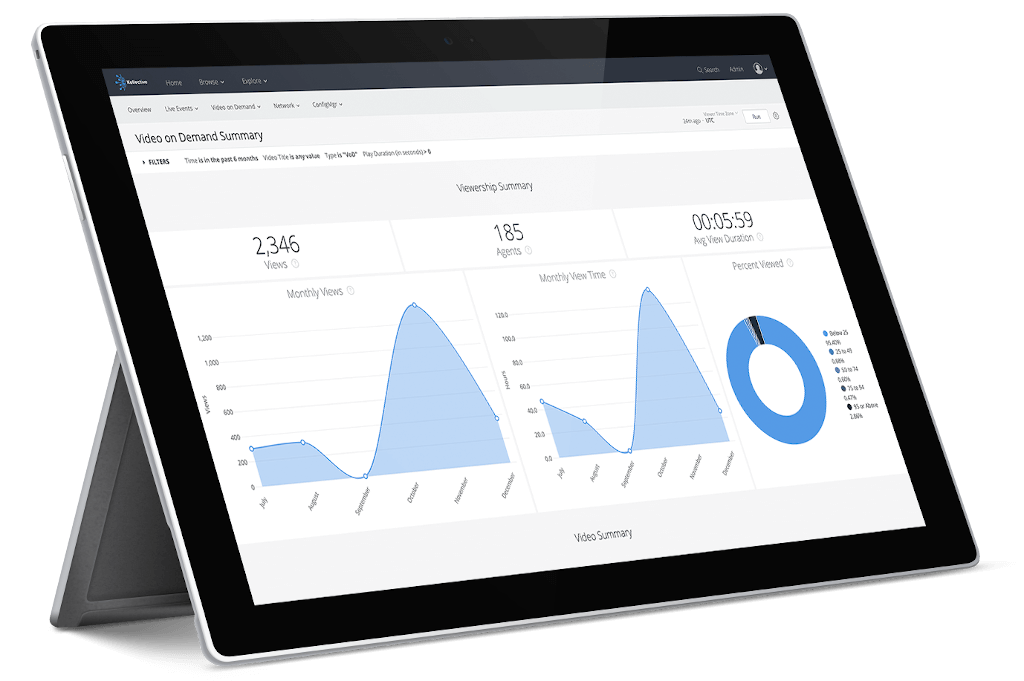Video is the most versatile content format. It can be used to launch products, for event highlights videos, how-to videos to educate your clients about your services, communicate with your team, and form meaningful connections with your prospects. 93% of marketers say that video was an important part of their content marketing strategy.
But without a video content management system to handle the sheer volume of content they create, it’s difficult for businesses to manage and organise their video library.
In this article, you’ll learn why video content management systems are a must-have in 2025, alongside a rundown of the best options available. You’ll know which solution to choose for your business and be equipped to use video in your marketing campaigns, sales processes, or internal ops.
Are you ready? Let’s go!
What is a video content management system?
A video content management system, or video CMS, is a SaaS tool that helps companies store, organize, manage and distribute digital content, either publicly or to their internal teams.
Great video CMSs are scalable according to your needs, and allow you to organize your video content in one centralized system so you can quickly find the right files.
Many video CMS platforms also offer detailed video analytics, livestreaming capabilities, or bulk access editing so you can quickly select who can see your content.
Now we're about to give you 8 video content ideas for CMS in 2025.
8 best video content management systems to try in 2025
If you’re looking for the right tool to help you get your video content in order, there’s a lot of choice out there. But not all video CMS’s are created equal, and which CMS you choose depends on the size, needs, and nature of your business.
Here’s our list of the top 8 video CMS’s to consider.
1. Wistia
Wistia is a leading video hosting site with a wide range of advantages. First, it’s highly customizable, allowing you to add your own branding to their video player and choose custom thumbnails for each video.
Their in-depth analytics, with tools like video heatmaps and engagement graphs, help you figure out exactly which parts of your video are engaging your audience. You can then export this actionable data to marketing automation platforms like Hubspot or Salesforce.
You can also share videos with password protection, and even add CTA buttons within your video to boost your conversion rate.
3. Kaltura
Kaltura is a video CMS built for meetings, live video streams, and collaboration. Their virtual classroom feature and various interactive elements like quizzes, polls, and breakout rooms also make it a great tool for e-learning companies or schools making the switch to virtual teaching.
Kaltura’s in-depth analytics features can help you track various metrics that show how your content is performing, including which sections people skipped or repeated the most, and which interactive elements got the most responses.
You can then export this data thanks to integrations with marketing platforms like Google Analytics and Marketo, and even LMS grading tools like Experience API and Watershed — so virtual teachers can tie viewer engagement data with other learning metrics.
5 benefits of a video content management system
If you already have a web CMS in place, you might be wondering if you really need a dedicated platform just for video. Or if you’re just getting started with video and not producing much yet, you might be able to get by without one for a short while.
But for companies who use a lot of video for external and internal communications, a video CMS is essential to streamline your workflows, simplify your life, and stop your video content becoming a pain in the neck.
Here are some benefits that video content management platforms can offer for your business:
1. Large file storage
Video and standard CMSs don’t get along. Files often exceed the maximum file size of standard CMS platforms; even if you’re not making a ton of videos, those megabytes can quickly add up.
But video CMSs are built specifically with video in mind and offer hassle-free uploading, storage, and speedy delivery of large files as standard.
2. Privacy and security
Video CMSs allow you to control who can see specific content in your video library, so you can safely share internal communications like training and explainer videos, memos, or meeting recordings. You can also restrict access to your customer-facing videos, such as videos behind a paywall or that are only available on sign-up to your mailing list.
Video security features vary from one CMS to another, but many offer powerful features like end-to-end encryption, domain-restricted access, and single sign-on (SSO) — so your videos will only be seen by the right people.
3. Searchability
With a video CMS, you can organize and search for videos by title, filename or metadata such as tags that are added manually or automatically to each video. Many video CMSs include automatic transcription or closed-captioning, which means you can search for the words spoken in the video or presented on-screen. Managing videos has never been easier!
4. Detailed analytics
Again, features vary by CMS, but many will enable you to track metrics such as where your viewers are located, which parts of the video they skipped or watched over again, and when they stopped watching — so you can optimize your content according to what works best.
5. Integrations
Depending on the software you pick, it may be able to integrate with your current CMS — and much more. Many of the video CMS’s below offer integrations with marketing automation platforms, communication tools, LMSs and analytics tools — so you can deploy your new CMS without disrupting your entire workflow.
How to choose the best video content management system
There are several factors to keep in mind when choosing the right video CMS for your organization. Here are the 4 key aspects to consider:
1. Pricing
When deciding between CMS’s for your organization, one of the most important aspects to consider is the pricing of each system.
You should always aim to find a system that fits within your team’s budget. By comparing pricing plans and subscriptions of different ones, you’ll have a better understanding of which tool will give you the best ROI for your budget.
2. Features
If you’re looking for a video CMS, you probably already have a list of features that are especially important to you. Make sure the system you choose closely matches your organization’s needs!
Features include: video editing, analytics, security, and integration capabilities.
3. Scalability
Before you choose a video content management system, you should have a thorough plan of how you will be using the tool and what the future holds for that tool! Consider whether the system you choose will grow alongside your business and if it will be a future need for your business’s success.
4. Customer service
Lastly, the customer service or support of the system you chose is of utmost importance! Make sure that the platform is providing fast response times and the right support channels that your business needs to get the most out of the product.
These support channels include chat, email, or phone, and the delivery of enough information.
Create your next professional video with PlayPlay
Video is here to stay. If you’re serious about using it in your marketing, sales outreach or internal communications, you’ll need a video-based content management solution to handle it — for live streaming, video analytics, storage, searchability, or all of the above.
Need an app like Canva for videos to kickstart your strategy?
PlayPlay is the video creation platform that empowers Marketing and Communication teams to transform any message into engaging video stories.
With our powerful and intuitive products, the best AI technologies, and our focus on enterprise storytelling, we've enabled over 3,000 companies to make video their main form of communication.
PlayPlay’s marketing video maker is the perfect tool for you, helping you to easily produce engaging content for your website and platforms like LinkedIn, Instagram, or YouTube. Sign up for a PlayPlay free trial, and start using the easiest video maker on the market right now!


